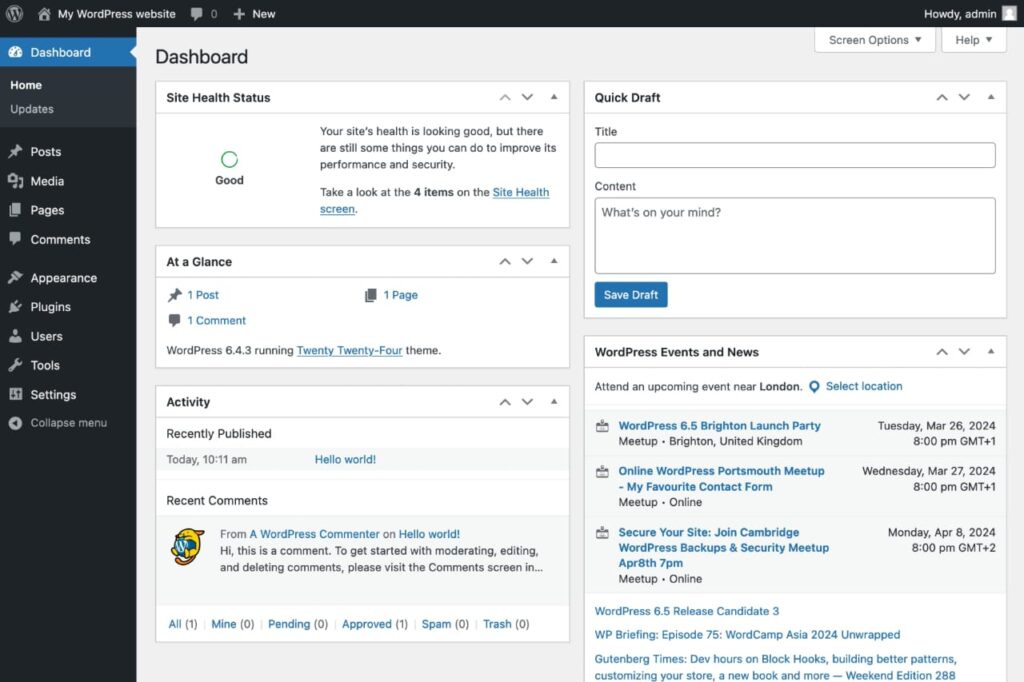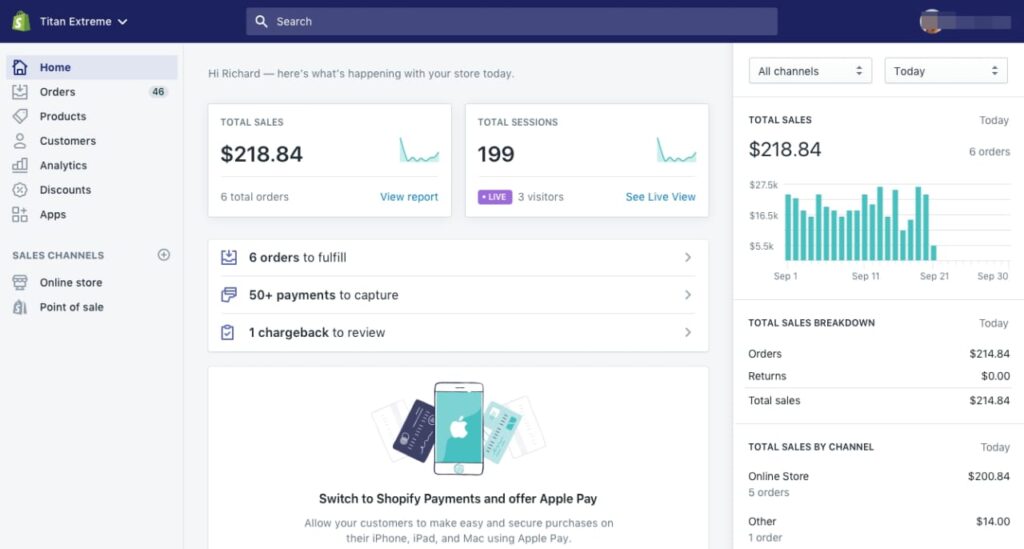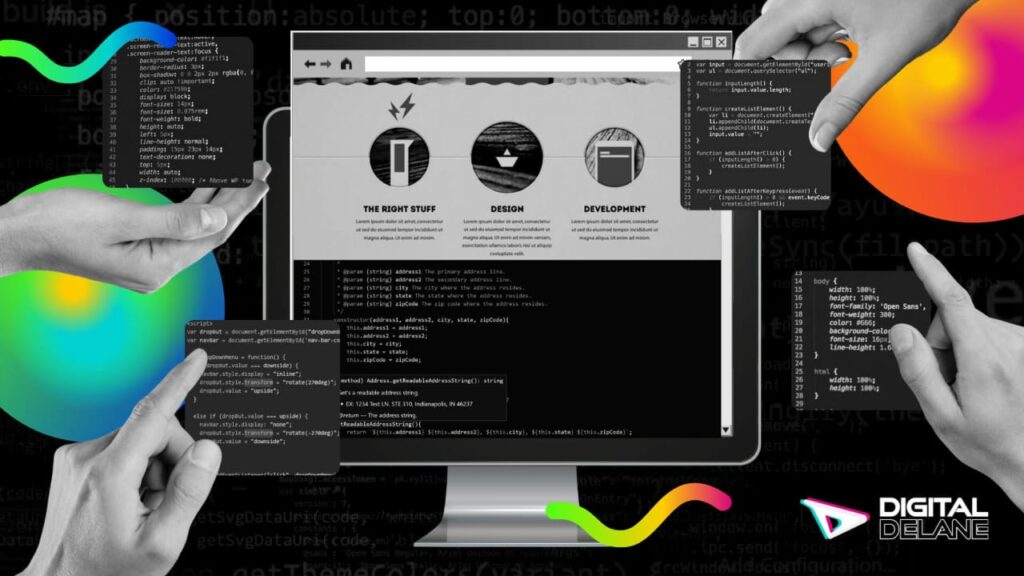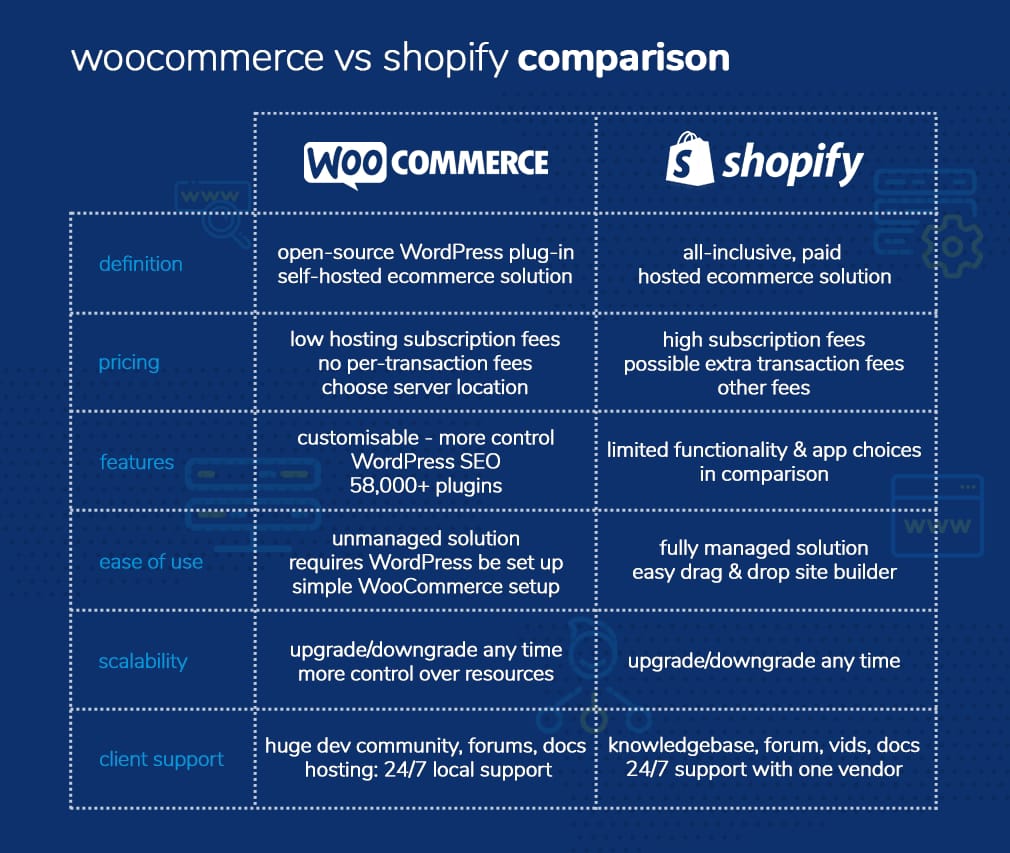When it’s time to launch or upgrade your business’s website in the U.S., the platform you choose is one of the most important decisions you’ll make. It affects everything from your initial cost and launch speed to ongoing maintenance, flexibility, and how quickly you can scale.
Whether your goal is a content-rich site, a robust online store, or something completely unique, understanding the trade-offs of each option is crucial. This guide compares three popular website solutions: WordPress, Shopify, and custom development.
We’ll help you decide which is the best fit for your business by covering real website costs in the USA, what experts, like WordPress developers and Shopify e-commerce specialists, charge, and the kind of flexibility and scalability each platform offers.
Why the Right Platform Matters for USA Businesses
Building a strong online presence is crucial for businesses in the competitive U.S. market. A successful website must meet customer expectations for speed, mobile responsiveness, clean design, secure transactions, and a seamless user experience (UX). Choosing the right platform is critical for achieving these goals.
Here’s what to consider:
- Budget & Return on Investment (ROI): Understand your upfront costs and ongoing fees. A platform’s value isn’t just its price tag; it’s how quickly you can recoup your investment through sales and growth.
- Launch Speed: When timing is critical—whether you’re entering a new market or preparing for the holiday season—a platform that lets you launch quickly can give you a major competitive advantage.
- Flexibility & Custom Features: Think about what your business needs to operate smoothly. Can the platform integrate with your existing CRM or ERP system? Does it support specific features such as custom tax rules, multilingual content, or exclusive member areas?
- Scalability: As your business grows, your platform should grow with you. Make sure it can handle increases in traffic, content, and sales without slowing down or becoming too expensive to maintain.
WordPress

WordPress, specifically the self-hosted version from WordPress.org, is a powerful, open-source content management system (CMS) that powers more than 40% of all websites. To create an online store, you typically integrate the WooCommerce plugin. This setup gives you nearly unlimited control over your site’s design, content, and features.
Pros
- Unmatched flexibility: As an open-source platform, WordPress offers you a vast ecosystem of thousands of themes and plugins. You can also build custom extensions to meet your specific needs.
- Powerful SEO and content marketing: You can easily optimise every page, blog post, product, and image with extensive tools like Yoast and Rank Math. This is a major advantage for U.S. businesses competing in crowded search markets.
- Control your costs: The core WordPress software is free. Your main costs will be for your domain, hosting, and any premium themes or plugins you choose. By working with experienced WordPress website experts in the U.S., you can build a high-value site efficiently.
- Extensive support: A large developer community and numerous agencies specialise in WordPress and WooCommerce. This makes it easy to find and hire experienced designers and developers who can help you build and maintain your site.
Cons
While WordPress offers immense flexibility, it comes with a few challenges:
- Maintenance burden: You are responsible for managing updates for the WordPress core, themes, and plugins. You also need to ensure they are all compatible with each other and address any security vulnerabilities that arise.
- Hosting and performance: High-traffic or complex sites require quality hosting, along with performance-boosting tools like caching and a Content Delivery Network (CDN), which can increase costs.
- Learning curve: WordPress requires some technical knowledge to use effectively. Without it, you risk running into issues like plugin conflicts or slow load times.
Cost considerations
The costs for a WordPress site can vary widely, but here’s a general breakdown:
- Basic costs: You’ll need to pay for a domain name (typically $10–$20 per year) and hosting (ranging from $10–$20 per month or more, depending on the quality). Many free themes and plugins are available to get you started.
- Premium items: For more advanced features, you may want to buy a high-quality theme ($50–$200 one-time) or premium plugins and extensions ($5–$100+ monthly or one-time). You might also need to pay for additional features such as membership functionality, multi-language support, or custom integrations.
- Hiring a professional: If you decide to hire a WordPress expert in the USA, expect to pay $50–$150 per hour or more, depending on the complexity of your project.
Shopify

Shopify is a comprehensive, all-in-one e-commerce platform that handles everything from hosting and security to payments. If you want to sell products online, Shopify is one of the fastest ways to launch your business.
Pros
- Quick and easy setup: You can sign up, select a theme, add products, and start selling quickly. Shopify requires less technical work than a self-hosted solution like WordPress with the WooCommerce plugin.
- Secure and reliable hosting: Shopify manages hosting, SSL certificates, and PCI compliance, which reduces your technical maintenance and lowers your security risk.
- Strong support and community: Shopify provides its own dedicated support, and you can easily find expert e-commerce developers and agencies. The platform also has an extensive app marketplace with a wide range of tools.
- Robust built-in e-commerce tools: Shopify includes essential features such as inventory management, multiple payment gateways, abandoned cart recovery, and integrations for multi-channel sales on social media and other marketplaces.
Cons
- Recurring fees and limits: You pay a monthly subscription fee that varies by plan. You’ll also encounter costs for apps, add-ons, and themes. If you don’t use Shopify Payments, you’ll also pay transaction fees.
- Less flexibility: Customisation is more limited on Shopify. While its Liquid templating language offers some control, you might hit a wall if your business requires highly specialised features. Making deep backend changes is also more difficult.
- Increasing costs as you scale: Your costs will grow as you add more features, apps, and traffic. Shopify Plus, the enterprise-level plan, becomes particularly expensive for very large businesses.
Cost consideration
A Basic Shopify plan typically starts at around US$29 per month. Your total costs will increase with premium themes, paid apps, or other integrations. You may also face additional charges for payment processing and transaction fees.
If you hire a developer or agency to build your store, expect to pay anywhere from a few thousand dollars for a simple site to tens of thousands for more complex customisation.
Custom Development

Custom development means building a website from the ground up or heavily customising a framework. With this approach, you can create a custom backend, design, integrations, and features. This gives you maximum control and allows you to align the website precisely with your business and user needs.
Pros
- Complete flexibility & uniqueness: You can build any feature you need without the limitations of a platform. You own or fully control the code, so you are not restricted by what plugins or apps allow.
- Scalability for growth: When done well, a custom site can grow with your business and its traffic, features, and integrations (such as CRM, ERP, and analytics) without performance bottlenecks or platform-imposed limits.
- Competitive advantage: A unique user experience, design, or proprietary feature can set your business apart from the competition.
Cons
- High upfront costs & longer timelines: A custom build requires extensive planning, architecture, coding, and testing. Since developers create the design, backend, and frontend from scratch or customise them significantly, the process takes longer and costs more upfront.
- Ongoing maintenance & support: After launch, your website will need regular updates, bug fixes, server maintenance, and security patches. You’ll need to hire or retain developers to handle these tasks, which adds to your long-term costs.
- Risk of scope creep: Without a clear definition of requirements and strong project management, the project’s scope can expand. This “scope creep” can lead to significant cost and time overruns.
Cost consideration
- Basic business websites: A business website with a custom content management system (CMS) and around 15 pages can cost between $10,000 and $30,000.
- Custom e-commerce platforms: Expect to pay $25,000 to $70,000 or more for a custom e-commerce platform with a bespoke backend and integrated payment gateways.
- Enterprise-level portals: Large, feature-rich portals with multiple integrations can easily exceed $75,000 to $150,000+.
Remember to also budget for ongoing maintenance and operational costs, such as hosting, security, updates, and content changes.
Key Comparative Dimensions
Here is a comparison of Shopify, WordPress, and custom development across several key dimensions.
Ease of Setup & Time to Market
- Shopify is the clear winner when you need to launch a store quickly. Its built-in infrastructure, which includes hosting, SSL certificates, and payment processing, makes setup fast and simple.
- WordPress takes more time. The process becomes even longer when you need custom designs, plugins, or configurations. While hiring experts can accelerate the process, it still requires more initial effort.
- Custom development takes the longest time to launch. The process involves multiple stages, from gathering requirements and designing to coding, testing, and deployment.
Cost: Upfront & Ongoing
- Shopify has moderate recurring costs. You pay a lower initial price for the platform, but app, theme, and transaction fees can increase your total expenses.
- WordPress has a lower base software cost, but you may pay more upfront if you hire developers. Ongoing costs include hosting, plugin and theme updates, security, and potential developer support.
- Custom development has the highest upfront cost. While ongoing costs are usually higher, you often get better long-term value and control, especially as you scale.
Flexibility & Customization
- WordPress offers very high flexibility, especially when you work with experts who can build custom themes and plugins.
- Custom development provides the highest level of customisation. Your only limits are your budget and technical architecture.
- Shopify offers good flexibility within its platform. You can make customisations using Liquid templates and apps, but you face limitations beyond that.
Scalability & Performance
- Shopify handles scalability well for most use cases. However, limits may appear with extremely high traffic or highly custom backend needs. Shopify Plus helps, but the cost increases significantly.
- WordPress‘s scalability depends heavily on your hosting infrastructure, caching, CDN, and optimisation. With good practices, it can scale effectively.
- Custom development provides the best opportunity for scalable performance. However, this is only true if you have a solid architecture, optimised code, robust servers, and thorough testing.
Support, Community & Experts
- WordPress has a large pool of experts, a thriving community, and extensive support for its many plugins and themes.
- Shopify also has many developers and a strong community, along with built-in customer support.
- Custom development requires competent developers or an agency. You get less “plug-and-play” community support and rely more on your vendor or in-house team.
Which Platform Should USA Businesses Choose?
The right platform for your U.S. business depends entirely on your unique situation. Here’s a look at what works best for common scenarios.
- Small businesses and startups with limited funds should consider Shopify. It provides a complete suite of e-commerce tools, hosting, and security with a clear monthly cost. You can hire U.S. Shopify ecommerce developers for lighter customisation, which keeps your initial investment low.
- Businesses that rely on content and SEO get great value from WordPress, often with WooCommerce for a store. This platform is ideal if you have a blog or offer services. Hiring U.S. WordPress experts to set up and fine-tune your site will pay off with better content and search rankings.
- When your business needs very specific functionality, a custom-developed platform is the strongest long-term solution. This is the way to go if you require complex integrations (like with ERP or custom inventory systems), unique data analysis, or a heavily interactive user experience. While the initial investment is higher, a skilled team can build a system perfectly tailored to your needs.
- For a flexible strategy, you can start with a hybrid approach. Many businesses begin on Shopify or WordPress to validate their ideas before moving to a custom solution. Others use a combination, building their blog and content on WordPress while using Shopify for their store.
Conclusion
There’s no one-size-fits-all answer. Choosing the right website solution depends on your specific needs, as there’s no single best answer. Shopify is ideal if you need to launch a fast, e-commerce-ready store. For greater flexibility, content management, and cost control, WordPress is a strong choice. If you require complete control and long-term scalability, custom development is the best option. To make an informed decision, consider your budget for both initial and ongoing costs, identify the essential features you need now versus those you can add later, and assess your access to expert help, such as WordPress website experts or Shopify e-commerce developers. Finally, think about how quickly you need to get your site live and your future plans for scaling.
